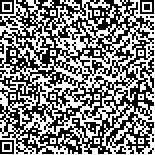下载中心
优秀审稿专家
优秀论文
相关链接
摘要

以高分四号(GF-4)卫星L1级标准分幅数据产品提供高精度的云检测产品为目的,研究针对地球同步轨道卫星数据的云检测算法,改进自动阈值以适应同日不同时刻成像数据的辐射亮度与地表反射特性的变化差异。利用GF-4卫星凝视成像方式获取的同区域序列图像以及云在不同图像上的运动特性,结合自动阈值与Savitzky-Golay(SG)滤波修正检测结果中的误检。算法的两个关键预处理,一是通过自动的几何配准解决未经几何校正的分幅数据之间像素位置对应的问题,二是通过基于典型相关变换自动提取序列图像之间的伪不变特征点集,进而利用相对辐射归一减小了不同时刻成像数据之间的辐射差异。通过内蒙古自治区东部及长江中下游区域70余组数据对算法进行验证,整体上获得了稳定的结果与精度,并且基于序列图像的云检测算法在云边界、高亮地表及薄云区域的检测精度整体优于单幅自动阈值的检测结果。结果表明算法精度上满足GF-4云检测数据产品需求,且算法自动化程度高,便于工程化的数据生产。
关键词:
GF-4 云检测 自动匹配 Savitzky-Golay滤波The research on cloud detection is an important branch of remote sensing image research. In recent years, with the increasing number and type of remote sensing satellites, cloud detection based on reference map/sequence image has become a subject receiving close review in cloud detection.GF-4 is a geo-synchronous orbit satellite launched by China in December 2015. This satellite is equipped with a visible-light/near-infrared camera with a resolution of 50 m and has typical high-resolution and multi-spectral satellite data characteristics. GF-4 satellites have many common characteristics as meteorological satellites. These common features include the geostationary orbit, area array starring imaging, and the mid-infrared band. GF-4 has the capability to acquire the sequence data of the same area in a short time.This paper attached importance to the algorithm of automatic cloud detection for early GF-4 satellite data acquisition. The research is based on the same area of multiple GF-4 images. First, according to the characteristics of the image data and cloud in different images on the movement characteristics, this work performed automatic geometric registration and relative radiation normalization on multiple images. Then, the image was set to automatic threshold by cloud detection and was processed by the Savitzky-Golay filtering. Finally, this work implemented an automatic cloud detection algorithm for GF-4 sequence images.This paper selected 36 data in the eastern region of Inner Mongolia and 39 data in the middle and lower reaches of the Yangtze River for cloud testing to detect the practical feasibility of the new algorithm. The following preliminary conclusions were obtained. (1) The results of the cloud detection algorithm based on sequence image are superior to those of the single-image cloud detection in terms of overall accuracy. The main difference was observed in the image of the cloud boundary, highlighted surface, and thin cloud area. Through the experiment, this work showed that the algorithm has a high degree of automation and can satisfy the needs of engineering data. (2) Based on the single-image cloud detection, using the automatic threshold method can provide an overall stability for the test results. However, owing to the diversity of the cloud in the image, improving the accuracy is obviously difficult for the proposed algorithm. (3) The mid-infrared band data of GF-4 cannot be simply used for cloud detection due to differences in coverage area, spatial resolution, and acquisition time.The shortcoming of the current algorithm is that the acquisition time of the sequence data is extremely long. Eliminating the radiation difference between the data obtained in the morning and those obtained in the noon with the simple linear relation is difficult. Simultaneously, the follow-up research will focus on the systematic cloud detection accuracy evaluation method.

